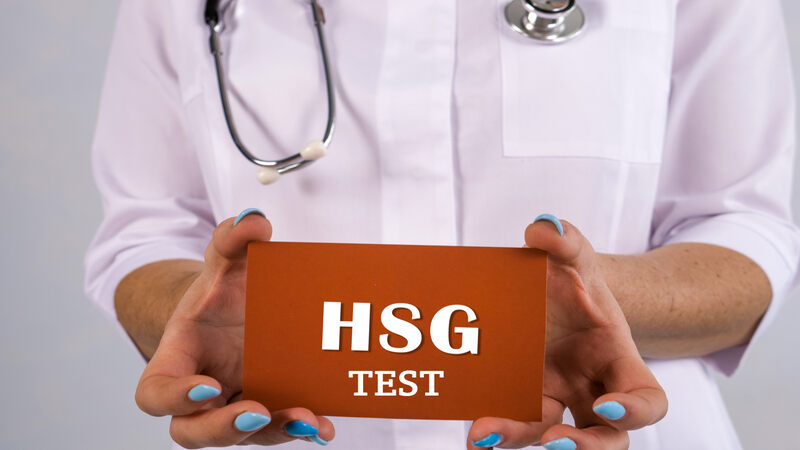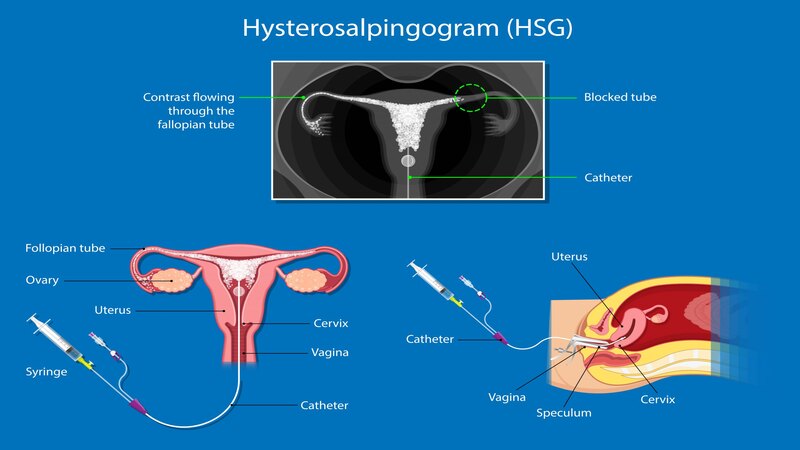
Getting pregnant is not an easy task for many couples around the world. Have you been trying to get pregnant for a while now? Did your doctor ask you to take the HSG test? Worried about the chances of getting pregnant after an HSG (Hysterosalpingogram) exam?
We have covered all the details for you in this article. Read on to find out everything you need to know about HSG and pregnancy after the HSG test.
What is a Hysterosalpingogram/ HSG Test?
The hysterosalpingogram (HSG) test is an X-ray to check if the fallopian tubes are open. The uterus is also checked during the course of this test.
Though this sounds like an invasive procedure, a normal hysterosalpingogram takes only about 5 minutes and is done as an outpatient procedure.
What is the Procedure of HSG Test?

Now that you know what is HSG, do you know how exactly this test is done?
An internal exam is conducted by the gynecologist by placing a cannula at the mouth of the cervix. The uterus is then filled with contrast liquid containing iodine. As this liquid passes through the uterus and the fallopian tubes- the length of the tube and blockage if any will be detected in this test. The liquid then spills out of the fallopian tube if they are open.
A normal HSG takes only a few minutes and the HSG images and HSG test video are used to study the uterine cavity. If there are any abnormalities, this fallopian tube test will help the doctor to identify them. If the HSG test results show the contrast liquid is not able to flow freely and has a blockage in the tube, it means your fallopian tubes are blocked and this could be the reason for your inability to get pregnant.
What is the Process Recommended Post HSG Test?
Now that the HSG test has been done and your doctor has a fallopian tube x-ray in hand, what will happen next?
If they have seen any blocks in the fallopian tube, the doctor will recommend you to get a laparoscopy. This is a procedure that allows your doctor to take a closer look at the fallopian tubes. Sometimes, your doctor might suggest bypassing the tubes and do an IVF to help you get pregnant.
Does HSG Test Help in Getting Pregnant?
The answer is yes, you can get pregnant after HSG. This is not because the HSG test itself helps in getting you pregnant, but the test helps in determining defects if any. The HSG test results help the doctor identify the next course of action to help you get pregnant. As mentioned above, this can be a laparoscopy or an IVF.
However, there are beliefs that the HSG test itself helps in getting pregnant, though not completely proven or accepted by the medical society. The controversial theory suggests the HSG test can increase fertility for the next 3 months. Coming to how soon after HSG can you try to conceive, we strongly suggest following your doctor’s instructions.
How does HSG Test lead to Pregnancy?

Though there is no standing evidence to prove this, there have been cases of successful pregnancy after the HSG test. The doctors believe that the flushing of the contrast liquid into the fallopian tubes can lead to the removal of minor blocks if any and thus helping the woman get pregnant after the test.
Is there a Time Gap between HSG Test & Pregnancy?
If you have been trying hard to get pregnant, chances are you are wondering how soon after HSG can you conceive.
The HSG test is taken after the completion of your menstruation and before ovulation occurs. If the test results are normal, you can even try to get pregnant during your ovulation after HSG . As mentioned earlier, your fertility could be on the higher side for the next 3 months, thus making it another reason for you to try getting pregnant immediately.
What are the Types of Solutions used in HSG Test?
Both oil-based and water-based contrast solutions are used in an HSG test. A study report published in The New England Journal of Medicine shows that the oil-based contrast solution had a higher rate of fertility when compared to the water-based contrast. This means when oil is used in a fallopian tube flush it resulted in more successful pregnancies than those that used water.
Is there a Recommended Time Period for HSG Test?

The best time to do HSG test is immediately after your menstruation ends.
What are the Side Effects?
The next concern for any woman is the side effects related to this fallopian tube dye test. Just like any procedure, this has its own side effects too, though very rare:
- A woman can develop allergies to the iodine used in the fallopian tube x-ray. If you are allergic to iodine, contrast dyes, or seafood, you must inform your doctor before the test is conducted.
- Sometimes this HSG test can cause a pelvic infection. Though this can be treated easily, in very rare cases, it can even lead to the damage of the fallopian tube, requiring it to be removed completely.
- Radiation exposure is very low. However, even if there is a small chance the woman could be pregnant, this HSG test should not be conducted.
- Mild spotting can happen in a few cases due to the use of the cannula. Consult your doctor if you experience heavy bleeding or continuous spotting even after a week’s time.
One of the precautions after HSG test that is recommended is to avoid the use of tampons to prevent infection.
Now you understand the chances of getting pregnant after a hysterosalpingogram is not difficult as you assumed. On the other hand, this procedure itself may help you to get pregnant. Also, the lowest hysterosalpingogram cost is only around Rs 750/- (depending on the hospital chosen, it may go up to Rs 2500 as well). So what are you waiting for? All the best for fast conceiving!

